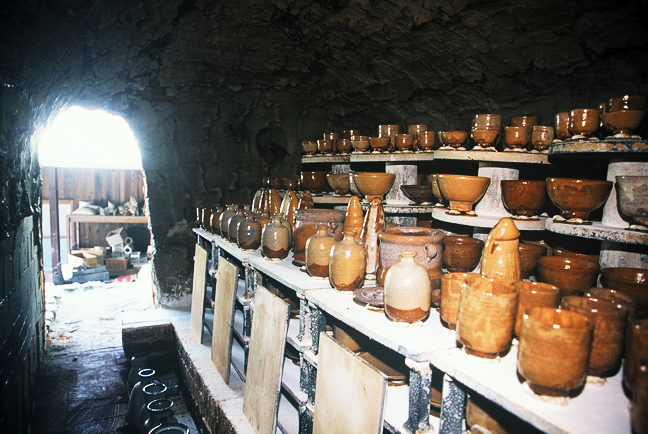The Making of Hagi Yaki Pottery
Introducing the Main Processes
1. Raw Earth
The raw earths used for Hagi yaki are Daidō earth, Mishima earth and Mitake earth. The earth is filtered with water to make clay.
2. Wedging the Clay
As much clay as needed for one use of the wheel is placed it on top of a wooden board and hand-wedged thoroughly.
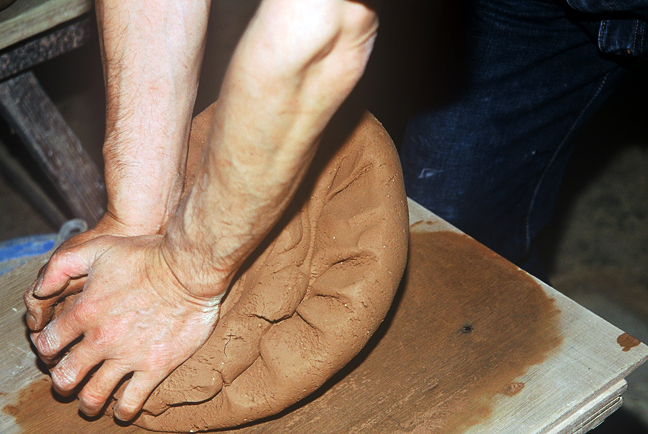
3. Creating the Piece – Throwing
The clay is shaped on a kickwheel with the use of water. The kickwheel rotates clockwise. Many potteries to the west of Japan, such as those at Karatsu, use Korean-style kickwheels.
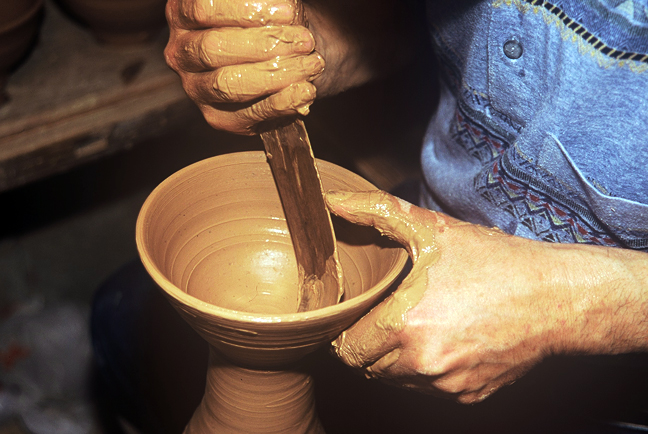
4. Creating the Piece – Trimming
The piece is left to dry for 2 – 3 days. It is then turned over and the excess clay is shaved away to create a foot. Usually a kickwheel which rotates counterclockwise is used for this process.
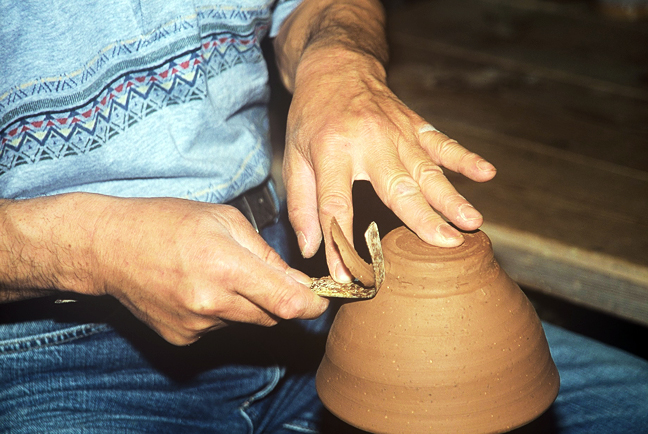
5. Creating the Piece – Decoration
After being allowed to dry naturally, slip is applied to improve the texture of the completed product.
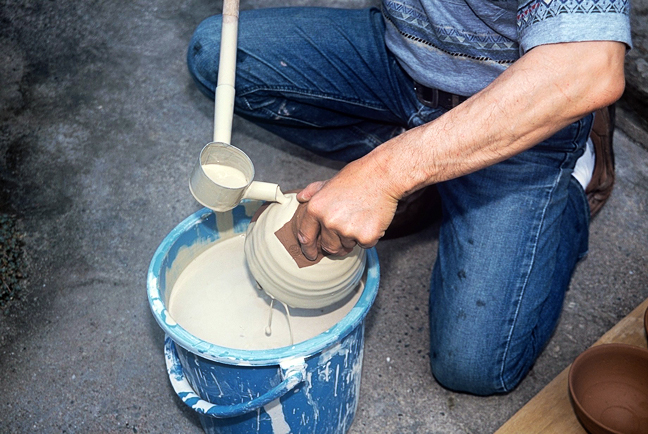
6. Biscuit Firing
After the piece has completely dried, it is biscuit fired in a single-chambered kiln or a wood-burning kiln, at a temperature of 700-800°C for 15-16 hours.
7. Glazing
The glaze for Hagi yaki is made from feldspar powder mixed with wood-ash or earth-ash to form a transparent glaze. Straw-ash glaze is added to this mixture to create a white glaze which is widely used. The prepared glaze is transferred to the Hagi ware. Keeping the finished product in mind, various methods for applying the glaze are employed, such as emersion, dipping, dripping, painting and more.
8. Stacking the Kiln
The kiln is loaded using stacking methods such as balance stacking, shelf stacking, or with the use of saggars to protect the pottery during firing. The entrance of the kiln is then sealed up with bricks and clay, leaving only the stoke hole open.

9. Firing the Kiln (1)
In order to remover residual heat from the kiln, the firebox is usually kept burning for 15 hours. The wood used is Japanese red pine.

10. Firing the Kiln (2)
The heat is raised. Small pieces of kindling are inserted via the side stoke holes to maintain a constant temperature. It is necessary to heat the kiln for 24 hours for a climbing kiln with three chambers; between 24-30 hours for a four chamber kiln and between 30-40 hours for a five chamber kiln. The chambers are heated to approximately 1200℃.
When to finish stoking the fires is determined by observing the time, the color of the fire, and taking out a small color sample from the kiln to checking the state of the glaze.
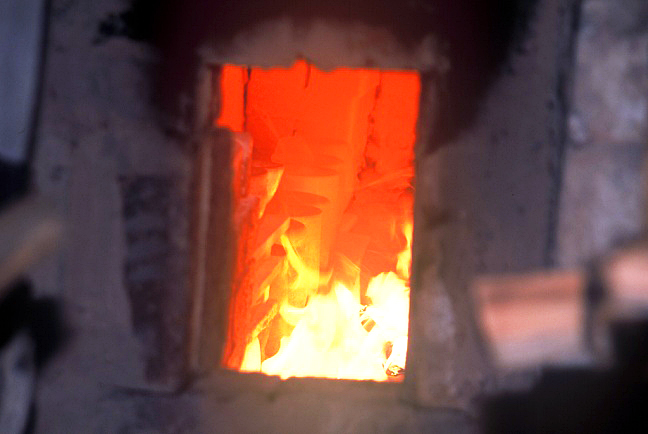
11. Removing the pottery
When the firing is finished, the stoke holes are tightly sealed with mud and bricks and the kiln is left to cool for three to seven days. The finished pottery is then carefully removed from the kiln.
